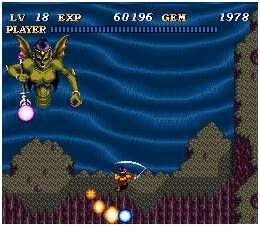
Truly my foray into the Alien franchise began with Alien Trilogy on the PlayStation, although I’ve barely touched that game. It began in earnest after watching Prometheus, an “unofficial” movie in the series, although it’s about as official as anything else if you ask me. I’ve now watched all movies in the franchise and am ready to dive into the related games and feel confident in my understanding of the source material. It helped too! I can comprehend the mediocrity of Alien 3 on the Sega Genesis a little more knowing that the movie it’s based on is of the same quality.
Of the “five” movies, I’d put Alien 3 at the bottom of the list. This is to say, I didn’t begin playing the Genesis game with much optimism. On the whole, I thought the movie was rather brown and monotonous visually, and the game didn’t shake this aura early on. It looks to have a few different environments to be fair, but I didn’t witness these firsthand. The gameplay was related to the events of the movie too but skewed (and omitted) the storyline in favor of more action.
Most stages tasked Ripley with rescuing the prisoners of Fiorina 161 and combating the aliens. The stages needed to be completed in a set amount of time and this was hard to do the first time through. Most took a few attempts to learn where the aliens popped up and rushed me and where the prisoners were. Locating the prisoners wasn’t so bad (I had to explore the stages anyways, right?) but constantly getting bum rushed by the aliens grew annoying. Often, they’d materialize at the edge of the screen as I progressed. They’d quickly charge and if I didn’t immediately start shooting, I would take damage. This led to much trial and error.

This sounds like a lot of negativity towards Alien 3. You want the lowdown though? I only progressed to the third stage and the game has twelve! I had no idea it was that beefy until I did further research. This being the case, I would only take this review as my experiences with a minority of the game and not a comprehensive examination of it. After seeing that I barely scraped the surface I am interested in playing more of it, but not because what I experienced was such a joy to play. I was oddly compelled to continue playing it, even when I felt like many of my deaths were cheap, so take that as you will.
![Alien 3 [Sega Genesis] – Review](https://mybrainongames.files.wordpress.com/2015/06/alien-3.jpg?w=672&h=372&crop=1)
![Kirby’s Dream Land [Game Boy] – Review](https://mybrainongames.files.wordpress.com/2014/10/kirbys-dream-land.jpg?w=672&h=372&crop=1)


















